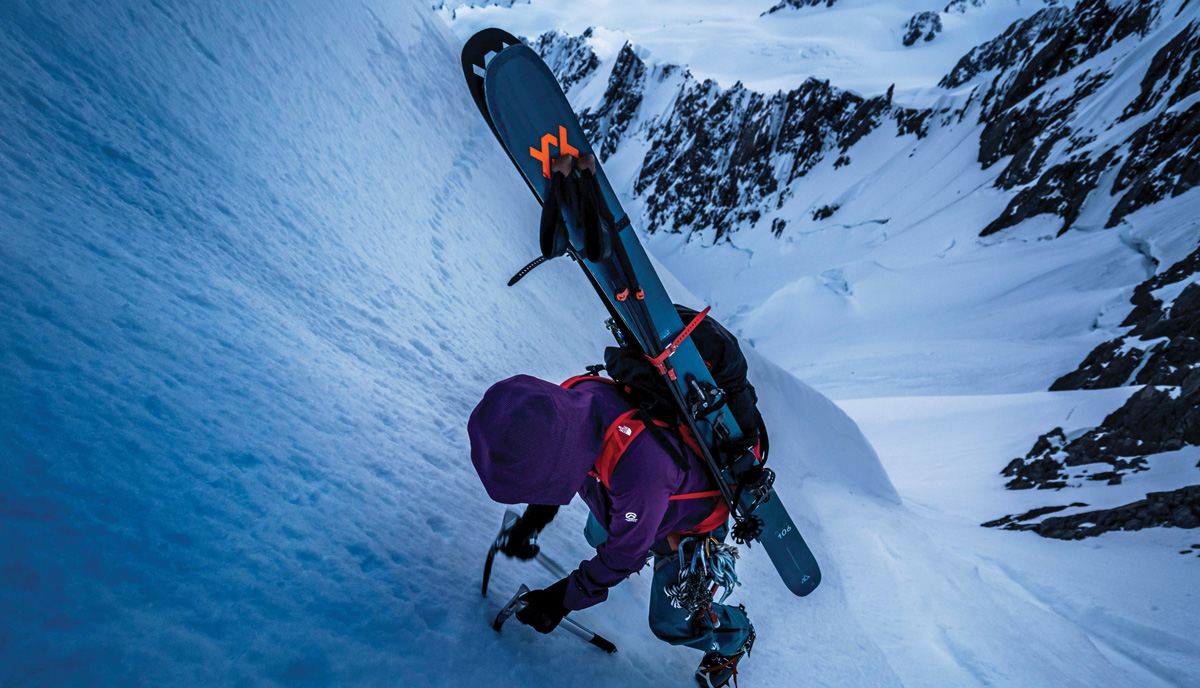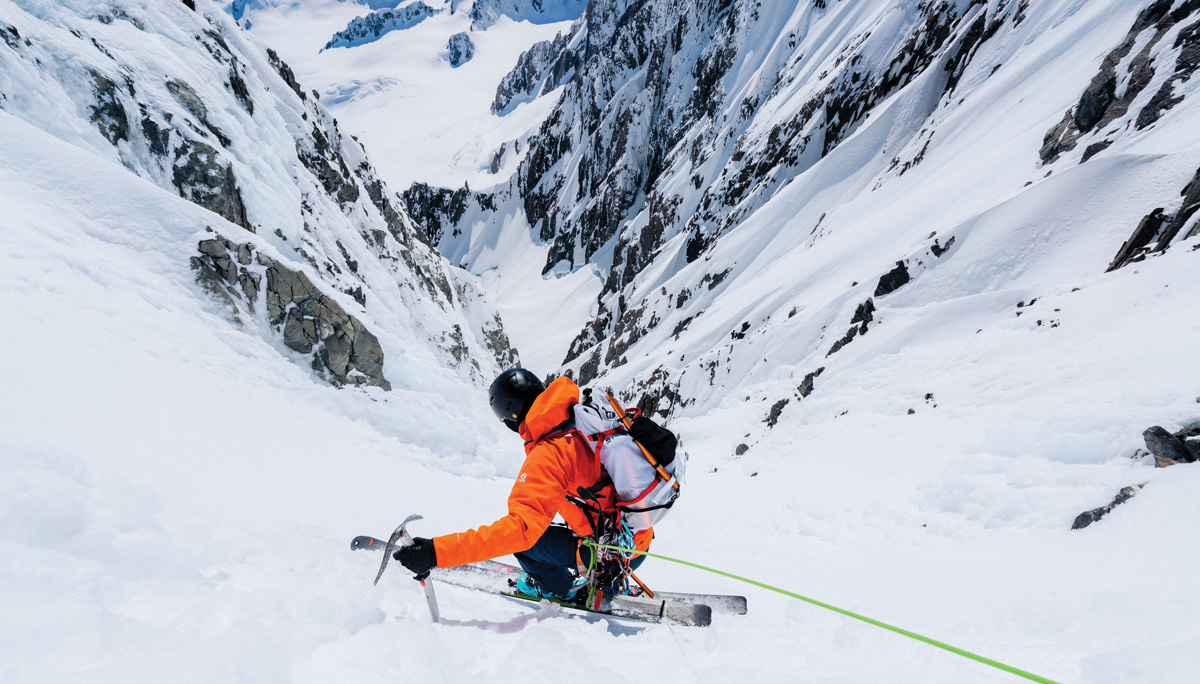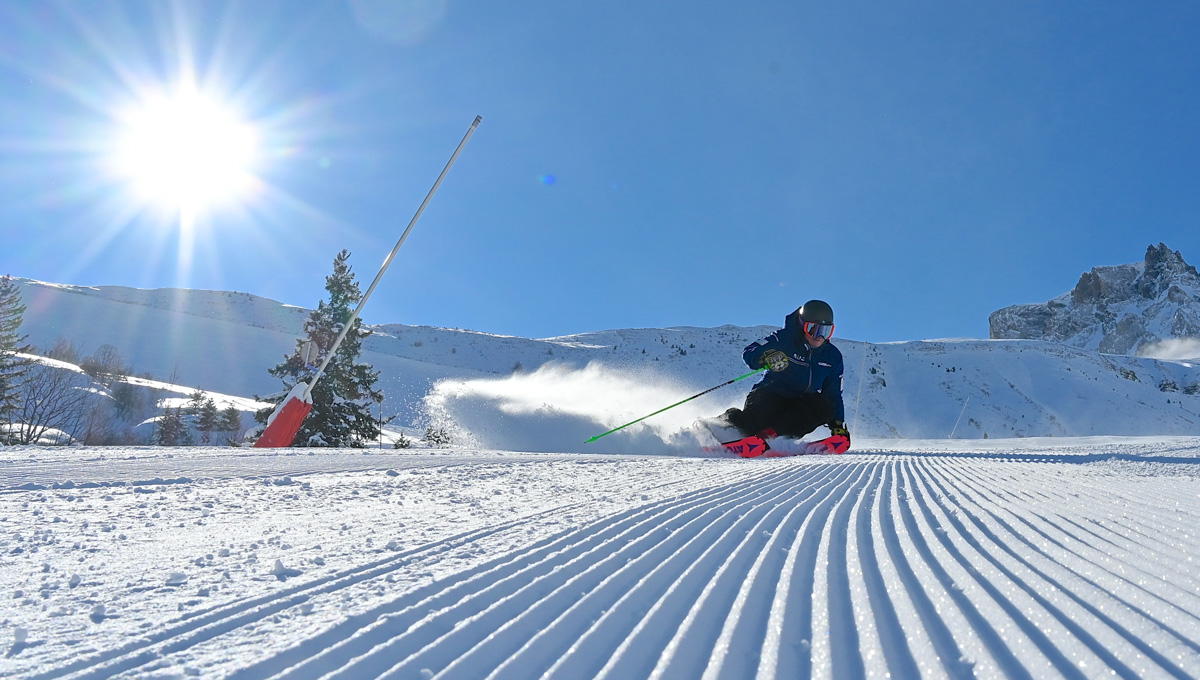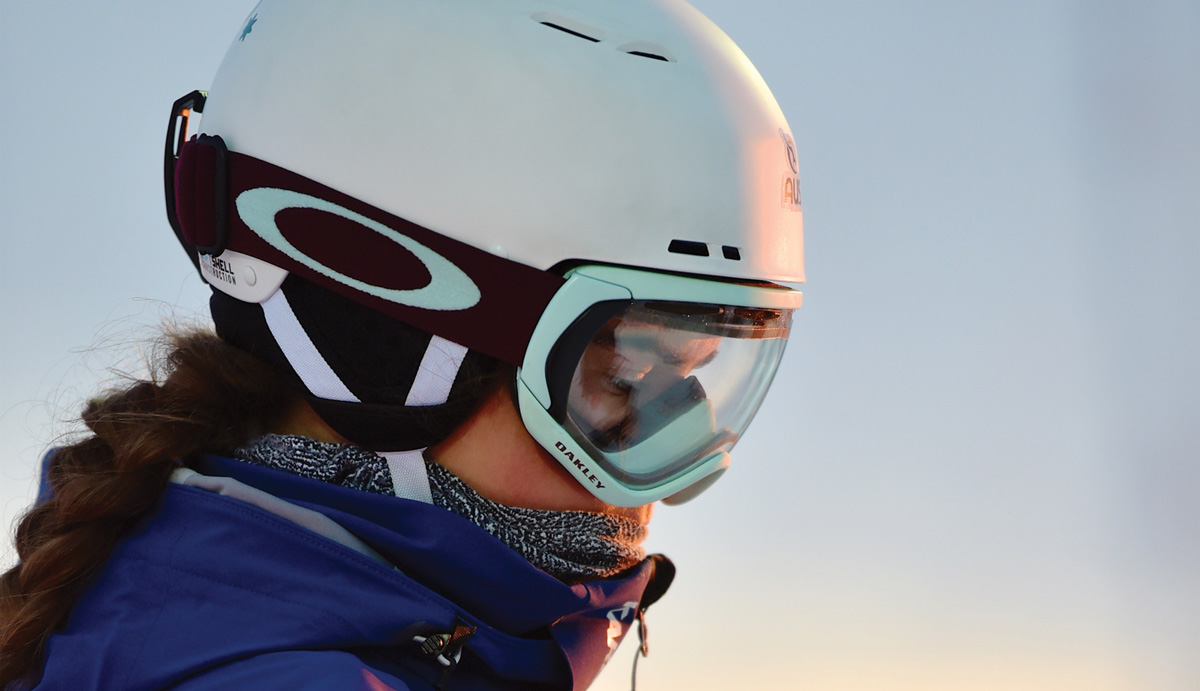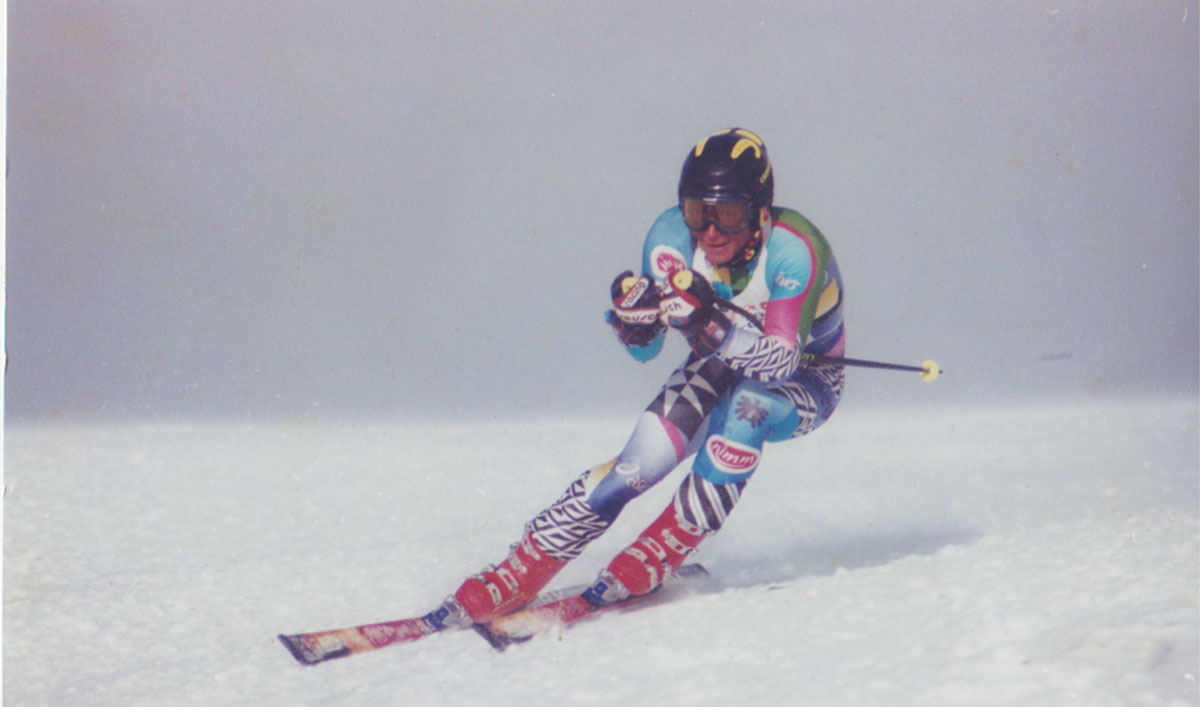Skiing to Mt Everest - really Big mountain skiing with Tim Macartney-Snape
In 1984 Tim Macartney-Snape and climbing partner Greg Mortimer became the first Aussies to conquer Everest, without supplementary oxygen and via a pioneering new North Face route from Tibet.
Then in 1990 Tim repeated the assault, hiking from sea level for his famous ‘Everest – Sea to Summit’ film and book.
Amazingly, he actually did that first 1984 climb in telemark ski boots, and long before ‘Big Mountain Skiing’ became a buzzword our skiers were carving lines amid the highest peaks in the world. He’s still climbing, and skiing, mostly camped out on the Main Range looking for the steeper challenges like Watson’s Crags, Australia’s prime ‘Big Mountain’ terrain, or in Japan’s Tokachi Mountains (see previous feature).
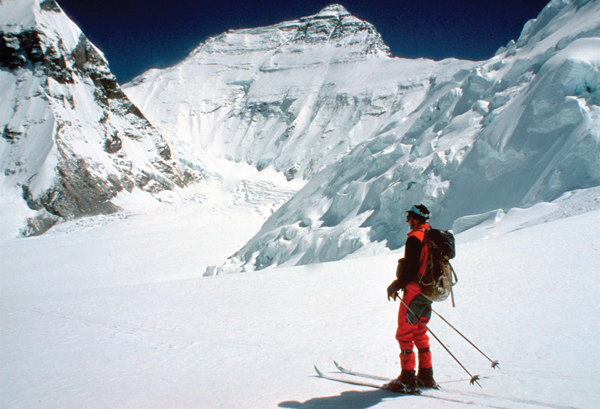
Tim Macartney-Snape skiing in to Everest 1984 © Lincoln Hall
Big Mountain skiing is the word now, but back in 1984 you climbed Everest in your tele boots, and took your skis part of the way. How did you come to be doing that?
Well since my first trip in 1978 to Dunagiri it was like, this is stupid, it was so much walking on snow just to get to the foot of the mountain that it would have been bloody good skiing. The next time I went I managed to buy a pair of langlauf touring skis from an American expedition, and I did a couple of turns on a snowdrift below the route on those getting in, but there was really just no snow so I didn’t use them. Then I had the skis over there, and the next year I went back to India on an expedition and the skiing was sensational on spring snow.
What sort of heights were you skiing from?
The highest I skied from that trip was about 6200m on Trisul, it was a very easy peak and I was planning to ski from the summit – in theory it was a pushover – but we ended up getting blown off it. The decent compensation was it was good skiing, even though I had really flimsy leather boots.
And just crappy little 3-pin bindings?
Yeah, very flimsy. But that’s the beauty of telemarking, you can tele on straight parallel edged skinny skis if you use the right technique.
The snow gets pretty ugly up there because it’s tropical too?
It can do, it goes off very quickly, but on skis it gives you more latitude than walking, which can be really hard work. But the spring skiing is fantastic, like 6000 foot runs.
6000 vertical feet?
Yeah, 6000 vertical. It’s hard work, and that’s an understatement. What really drives the lack of oxygen home, and the realisation that when you’re cranking turns you use a lot of energy, is skiing at altitude. You do two turns and you’re totally breathless.
But it’s still easier than walking coming down from climbs?
Yeah, but you’re going slow, you’ve just got to be patient and take a break every few turns.
Were many other mountaineers using skis then?
No, not really.
When you did Everest in ’84 you took the skis with you?
Yes, because I knew we were coming in on the Central Rongbuk glacier on the Tibet side. From the climbing advance base, which was about 5800m it was 3km to the foot of the face, and all of that was on snow, the altitude difference was about 300m, so it was a pretty good ski down. And when the weather was confining us to camp we could just go out and ski on drifts behind camp.
What’s the snowline in Tibet usually then?
Depending on the aspect the snowline at that time of year, end of monsoon season in September, would come down to about 5700m on the glaciers.
You didn’t actually then climb higher with your skis?
No, once you got on the end of the glacial neve it’s just too steep. You couldn’t ski, an extreme skier with solid alpine stuff might ski some of it, but only some of it, because there’s massive rock steps.
And they’d be struggling to carry the gear up?
Yes, and you actually have to climb not walk – using your ice tools – and any fall you’d go, there’s no way you would stop, you’d fall to the bottom, you’re dead basically. So no, especially on 3-pin gear.
Yet you ended up having to climb the whole way in your tele boots, how did that happen?
We had a gear dump in the bergschrund at the foot of our route which according to the evidence we could see around was protected from avalanches, but it wasn’t, as we later found out, protected from spindrift. We retreated in the face of a storm which lasted a couple of days. When we finally got back up we couldn’t find the gear. There was avalanche debris either side, but nothing had come down onto our gear dump, but mysteriously we couldn’t find the gear. On the second day of digging the realisation of what happened dawned on us, after a short, slight snowfall, spindrift from the face came curling down into our little cave on the bergschrund. In no time there was a pile of snow nearly 2m high, so that was the problem. But there wasnt a big pile of spindrift from the storm because what happens on the glacier is it’s like a very, very, very slow moving river – if you plonk an object under a waterfall it’s going to flow down with the current, and that’s what our gear had done. We dug and probed a lot, but we couldn’t find it. I had the largest feet on the expedition so I couldn’t borrow any climbing boots, so the only boots I had were my leather cross country ski boots. Luckily they were made for quite cold conditions. I was able to take the liner out and replace it with a foam one, and I had these old crampons that would snap on and they worked with them too. But because they were lace ups, and the laces didn’t come very high, when I was on steep stuff on my front points my feet would start to slip out of the boots and I would have to turn sidewise and kick my heel into the bottom of the boot again to keep going. Anyway it worked, I’m sure it must have been better than what the pre-war guys had with their hobnail boots.
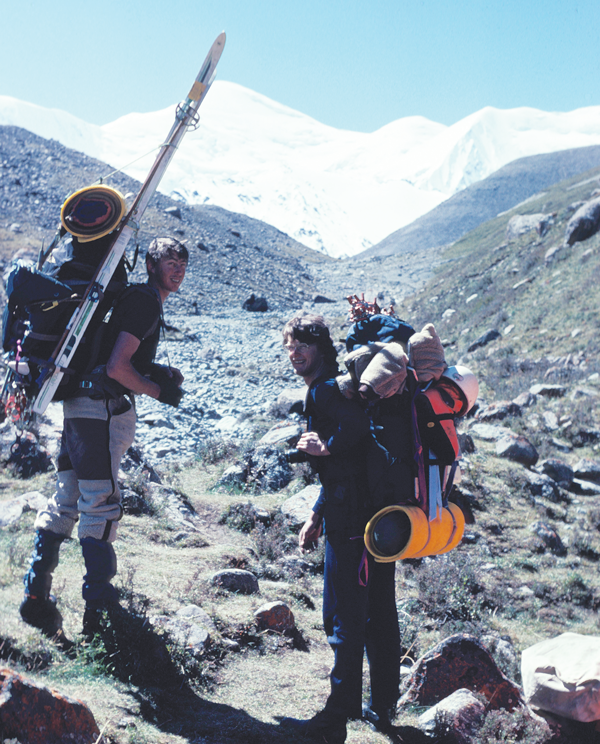
Tim & the late Lincoln Hall, Anmeyaquen 1981 © Geoff Bartram
These days if you are taking skis the equipment is a bit better.
Funny thing is when we were backcountry skiing we always knew what we wanted – stiffer boots, and wider skis with stiffer bindings and better edges, because our gear always used to break. You either broke the 3-pin binding or you broke the lugs in the end of the boot.
Skis used to break a lot too.
God I’ve broken so many sets of skis! You would break a ski turning, just cranking a turn they would break under you. So bindings got better, boots got better and skis got better. It’s all of course a lot heavier, but you’ve got so much more control.
What’s your favourite current ski to get out on the Main Range and stuff with?
For touring in Australia the Black Diamond Aspect is my favourite ski – I have to say I’m a bit biased towards Black Diamond as I have easy access to them [his company is Australian importer for BD]. They were the main force behind the revolution in telemark gear. They came out with the first decent cable binding for telemarkers, they developed the first plastic tele boot, which they developed through Scarpa. Quite early on they were driving the development of better back country skis. A few years ago they made the decision to get serious about skiing, with their own ski boot line and revamping their skiing line, making their own skis – they used to get Atomic to make them. The Aspect is an example, it’s fairly light but it can hold its own on hardpack pretty well, it does chatter a little bit on ice and steep stuff, but it’s a solid mountain ski.
You like getting into the steep?
For sure, only in good conditions though.
What’s your favourite runs out there?
Watson’s Crags. It’s got all aspects – east, south, north, west facing – and all aspects have quite challenging terrain. Also the terrain is varied, there’s chutes, there’s open slopes, cornices, fantastic spurs with little vertical shaped conrnices you can do turns on.
What’s the lowest you’ve been down there?
Way way down. That’s the problem, the only way out is over the top in winter. You can get two and half thousand vertical feet after a good dump. Which is a long climb. Generally you like to do at least a couple of runs and in steep stuff like that it’s almost easier to boot pack back up and set a track rather than skin up. I’ve climbed from the bottom a few times in summer, but it would be a nightmare going right down in winter.
What’s the highest point you ever skied from overseas?
Probably about 6500m, we could have gone from over 7000m on Trisul if we hadn’t got blown off and had our tents destroyed by the wind. I’ve skied up in the Western Cwm of Everest on the Nepal side, it’s up around 6500m. It’s a little bit intimidating, because you’ve got big slopes above you with rockfall potential and avalanche potential after it snows, and big crevasses, massive crevasses. I’d love to go back there to ski somewhere high – not to climb but specifically to ski. Nothing too serious. The potential is huge, obviously places like Gulmarg and Manali they are skiing, but there are plenty of other places. Especially on the Chinese side, there are just so many mountains up there.
What do the Tibetans think of skiing?
Probably something to chop up and make a yak saddle out of maybe. Seriously, it’s mostly just too dry for useful snowfall in a lot of Tibet. But up in the Altai they apparently developed skiing independently of the Norwegians, so skiing there goes back a long way. I’d like to see that.
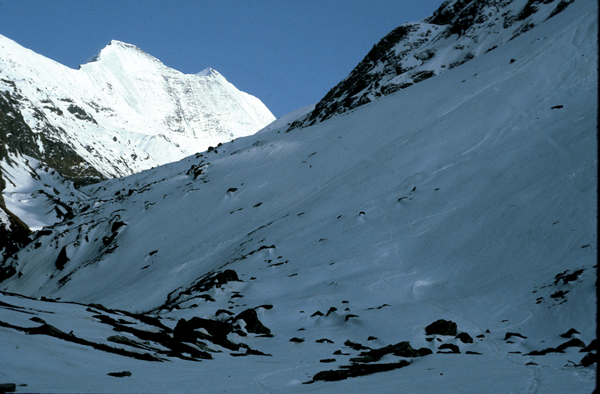
high tracks © tim macartney-snape

